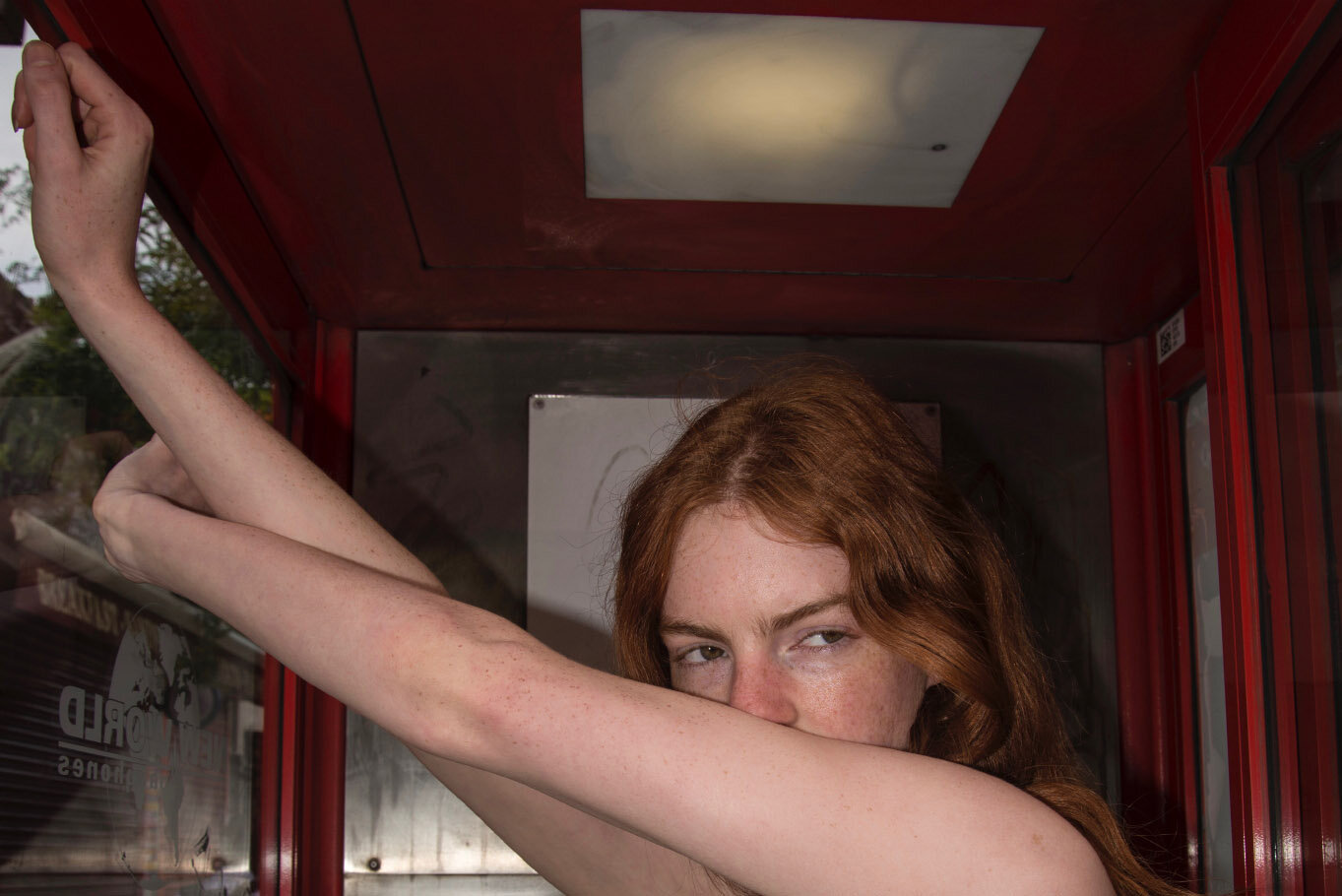Freddie Talbot
Reflecting on the photographer’s powerful portrayal of interrelations between life forms through somatic interrogations.
Whether it be our lust for the flesh of fish, our coveting of their beauty or our greed to capture them, there seems to be something uncanny about our interactions with these organisms, a dynamic that Freddie Talbot seeks to explore and subsequently subvert in his eery depictions.
Clutching an acrylic-encased camera, a younger Freddie Talbot took his first ever photo underwater whilst snorkelling in the midst of a coral reef. Limbs flailing, he kept his device in focus as dots and dashes of vermillion raced by him. While violet strands waved placidly, a rusted smudge hid coyly behind a staunch rock. Although now navigating away from this particular aquatic atmosphere, Talbot continues to draw inspiration from the ocean and it's creatures in his energetic portrait photography set within pedestrian environments.
Reflecting on his early deep-sea experiences, he returned to the same vibrant reef and found that it had been bleached to stark white. When surrounding water becomes too warm, coral become “stressed” and consume or expel life-giving algae, zooxanthellae, causing it to starve to death. What was once a bond where one organism lived within the body of another has now turned cannibalistic. Living in the age of the anthropocene, we are witnesses to a fragile type of matter that decays into freakishness when prodded or ogled. Equally, Talbot alludes to humans’ own dependence on the life-force of other animals, highlighting the grotesque within the mundane. His “Stretching Limits” series vividly reflects the tangled relationship between human and fish, hinting towards our capture, consumption and containment of their flesh. In these symbolic situations, figures either brandish butchered fish, beheaded, eyeless and ice-encrusted, or contort in baths, enclosed within a pseudo-vivarium.
Where representation is concerned, he prefers to have nurtured personal connections with those he characterises, habitually seeking out creatives whose charisma intrigues him. Rather than sticking to a pre-prescribed concept, Talbot picks a setting where the person feels most comfortable, whether that be a domestic, natural or urban environment. Their clothes, makeup and poses are even their own. This collaborative process invites intuitiveness and creates unexpected moments of surreal movement.
Inside a bath filled with water and rimmed with mildew, one figure is crystallised in an acrobatic suspension while clambering out of this claustrophobic space. This imposition mirrors the widely held entrapment of living things for spectacle, invoking in the model what Talbot views as “the animal within”. Innocuous appendages become loaded through a voyeuristic gaze; a bare armpit, the inside of a bottom lip, the cleft of a lower back. Considering Talbot is a gay man, there is a gawkish sexuality in these bodily contortions, brought out by the unintentional glimpse of an intimate occurrence. In the transitory space of a sheltered yet breezy marketplace, Talbot’s model playfully interacts with the tactile environment, she is static amongst tuberous potatoes that mimic marine plants, while neon lights fluoresce above her as a facsimile surface of the sea. The commodification of each is highlighted, which charges the series with an eco-feminist narrative, an ideology which addresses the parallels between the oppression of nature and the subjugation of women. Their power is elevated through their stance, as they glare, unfaltering, into the lens.
Flash illumination, when deployed illicitly in fish tanks, renders images of stunned creatures framed by razor-light diffractions, which bounce around the subject and spotlight flecks of dust floating through the water. Just as in this case, Talbot deploys an unapologetic flare to expose the raw textures of the scene, and suspends the movement in crisp detail, contributing to a mysterious sense of artificiality. To avoid getting wrapped up in technical matters, Talbot favours a digital camera for its instantaneous results and doesn’t retouch in post production. He uses a consistent methodology between shoots, instead concentrating on pushing forward the aesthetics of the overall still. This exposing of reality remains spontaneous yet staged as dioramas of absurdity, preserved in time.
With plans to continue his series “Stretching Limits” by capturing an aquarium and a fish and chip restaurant, Talbot will progress drawing his attention to casual encounters with the sub-aquatic realm. These are establishments in which our timelines are intricately interwoven; in an aquarium, we enter a space which displays the life of a fish, and in a restaurant we may celebrate an occasion with their death. Much like the presences in Talbot’s photographs, these encounters confront us with the corporeal embodiment of these beings; whether glimpsed through the glass, or presented on a platter. Imposing an intrusion, their spherical eyes stare past us into unknown territories. But in Talbot’s narrative, the feminine gaze is empowered as their wide eyes pierce our own.
words VANESSA MURRELL
What to read next

















